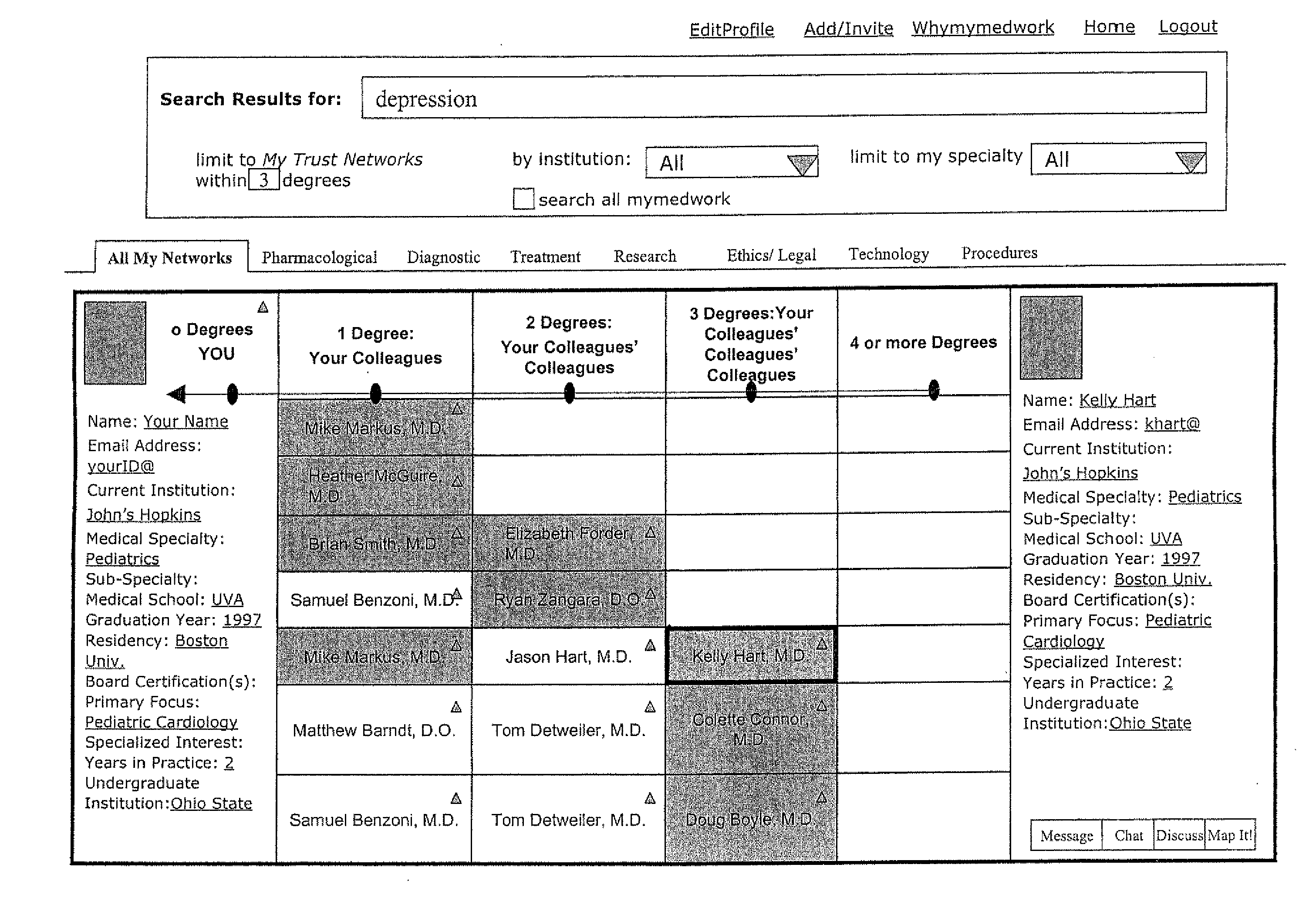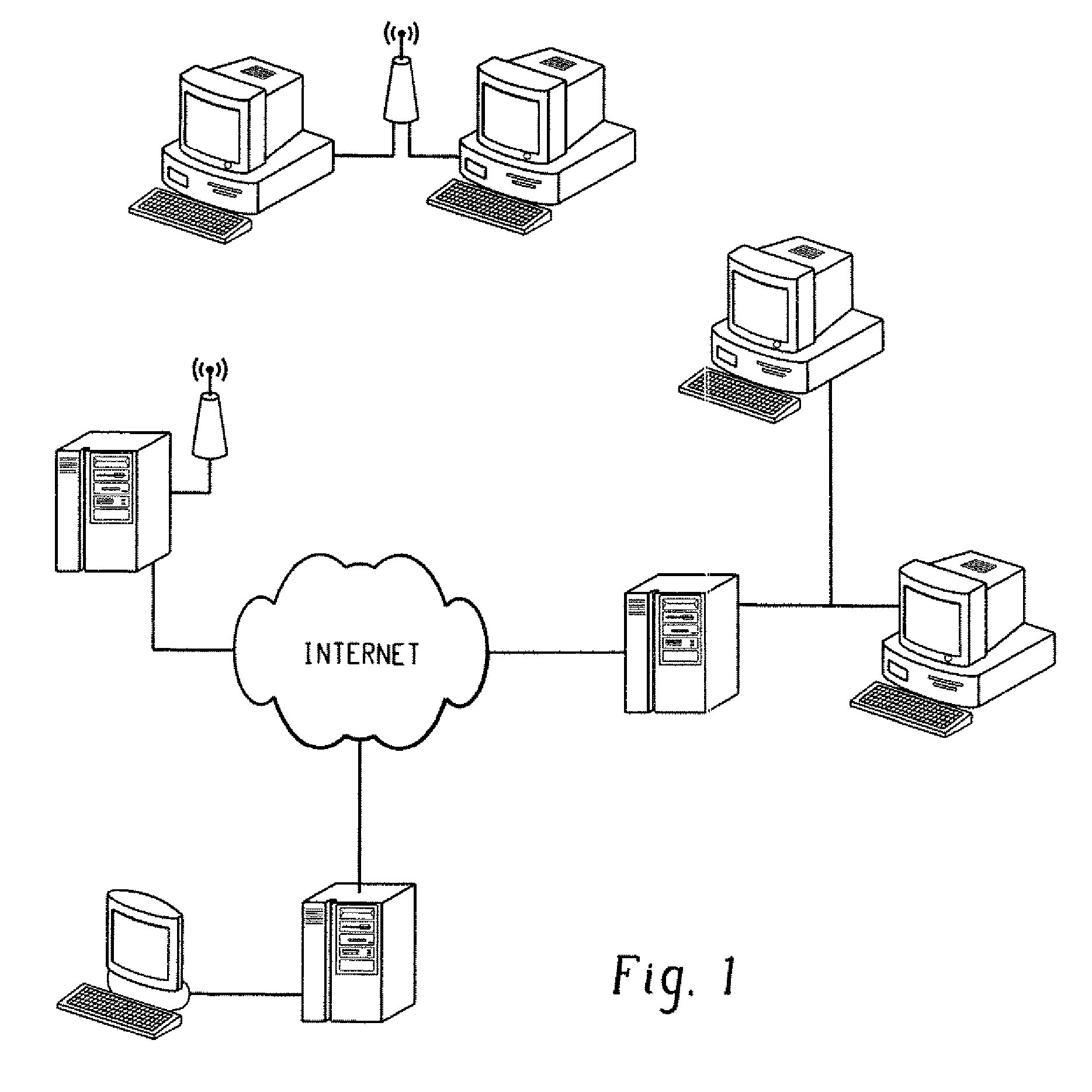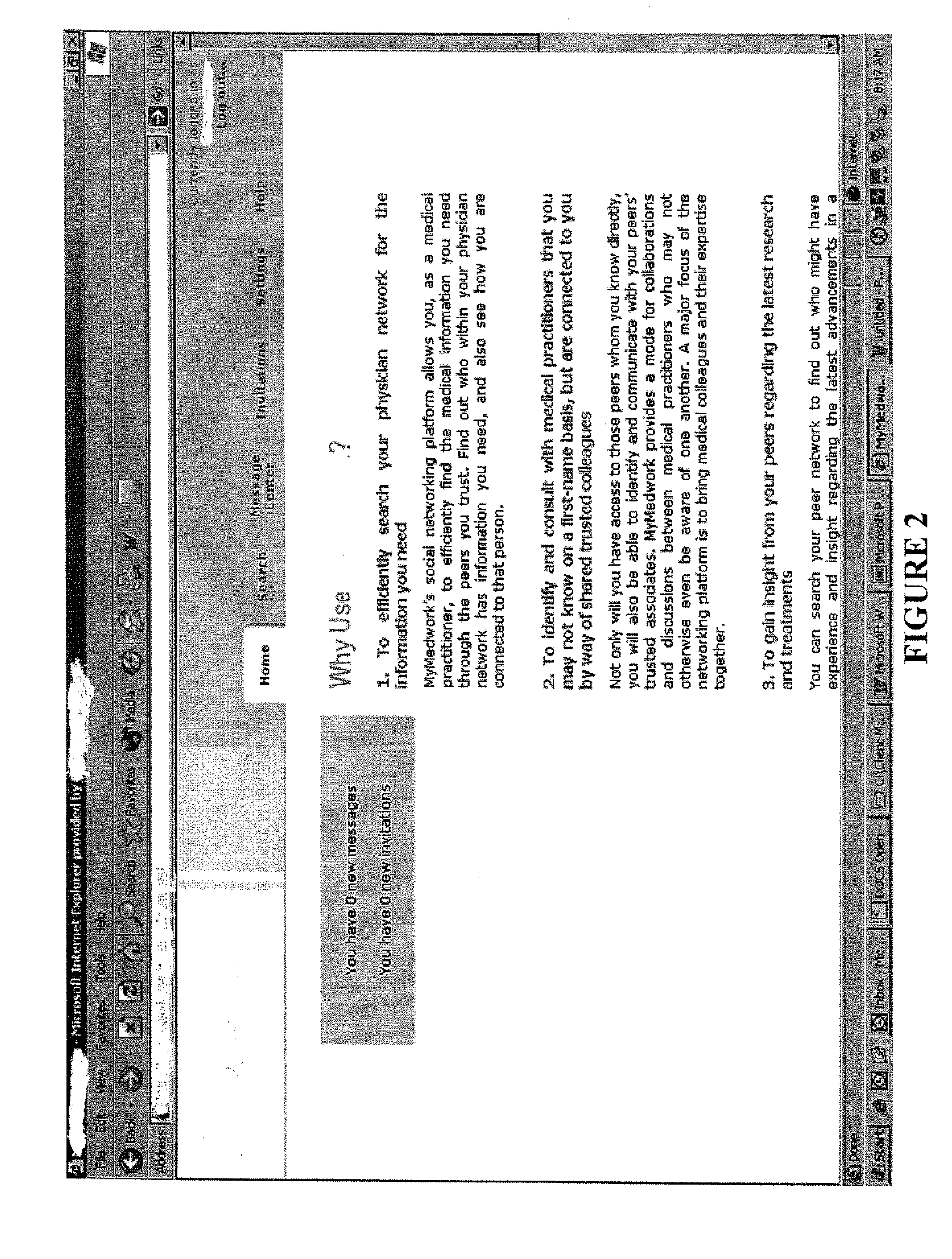Social network analysis
a social network and network analysis technology, applied in the field of social network analysis, can solve the problems of preventing people from acquiring valid, reliable and useful information, preventing people from trusting and unable to procure experiential and other knowledge, so as to increase the reliability familiarity of information sources, accurate portrayal of directionality of social network or personal communication network links, and the effect of improving the reliability of information sources
- Summary
- Abstract
- Description
- Claims
- Application Information
AI Technical Summary
Benefits of technology
Problems solved by technology
Method used
Image
Examples
Embodiment Construction
[0096]This invention is generally directed to social-network analysis of a personal communication network or personal communication networks. An embodiment of the present invention provides a system for classifying at least one personal communication-network member as an opinion leader in a field of interest based at least in part on personal-communication-network data.
[0097]The term user is used below to describe a personal-communication-network member or other authorized individual who is has been invited to join a personal communication network by a personal-communication-network member and use the system of the present invention to communicate with other personal-communication-network members. A personal-communication-network member is used to describe an individual who has previously joined a personal communication network and has saved a profile of himself / herself in a computer-accessible memory that can be accessed to electronically store information to be used with the syste...
PUM
 Login to View More
Login to View More Abstract
Description
Claims
Application Information
 Login to View More
Login to View More - R&D
- Intellectual Property
- Life Sciences
- Materials
- Tech Scout
- Unparalleled Data Quality
- Higher Quality Content
- 60% Fewer Hallucinations
Browse by: Latest US Patents, China's latest patents, Technical Efficacy Thesaurus, Application Domain, Technology Topic, Popular Technical Reports.
© 2025 PatSnap. All rights reserved.Legal|Privacy policy|Modern Slavery Act Transparency Statement|Sitemap|About US| Contact US: help@patsnap.com



